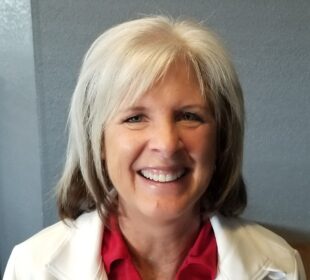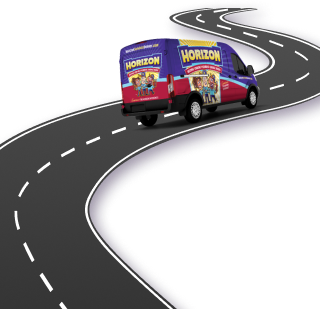Incandescent, Compact Florescent (CFL), and Light Emitting Diode (LED), how do you know where to use which bulb?
- Can it be tossed in the garbage when it no longer works?
- If one breaks, can you clean it up with a broom or a vacuum?
- Which one is bright enough that it can be used for reading? Is the color rendering the same on all bulbs?
- They can get very expensive, which one is the most cost-effective to use?
I know, I know, what a pain these questions are. They are a pain because they make you realize that the lighting industry is changing and we need to know more about what we are buying. It is time for a light bulb education. This is important information. Let’s dive right in!
The incandescent bulb is being phased out by the Federal Government. The phase-out is to begin this year with the 100-watt bulb. If there are areas where you would like to continue using this bulb, you would be wise to stock up on them, today—if you can find any on the store shelves. The entire phase-out is to be completed by 2014. The incandescent bulb uses 60-70% more electricity than a CFL bulb. It makes sense to reduce our energy consumption. However, you need to know more—
CFLs have limitations. They are not the ideal bulb for every application. Listed below are several areas in which the CFL is not the best choice. If you do use them in any of the areas listed, please know that they will not last for the listed life expectancy as stated on the box.
- Frequent On/Off: Areas such as closets and pantries where you pop in for a minute, turn on the light, find what you need, and then turn it off. The 10,000-hour life expectancy is greatly reduced when used in this type of location. An LED or Incandescent is better suited for these areas.
- Dimmer Switches: Very few CFLs are dimmable. Read the box before buying or installing. The bulbs hum and the life expectancy is greatly reduced when used on a dimmer switch. You may be able to find a CFL that can be used with a dimmer switch. Read the boxes carefully before purchasing and/or installing.
- Outdoor Use: Low temperatures can reduce light output. Read the box to ensure that it is rated for outdoor use at low temperatures. In a garage, the CFL is slow to respond and gives off enough light as a result of the cooler temperature.
- Recessed applications: Light fixtures and sockets that create a heat build-up will reduce the lifespan of the CFL. It is recommended that you buy specially designed CFLs for this application. An incandescent or LED is better suited for this use.
- Recycling & Clean-up after breakage: CFLs contain small amounts of mercury which is a toxic metal. This metal may be released if the bulb is broken, or during disposal. The CFL bulb requires recycling. Ask your retailer if they have a program available.
LEDs are a higher initial cost bulb. Look for Energy Star and UL certifications on the box. The lifespan of this bulb is greatly affected by the manufacturing. Not all LEDs are created equal. Buyers beware of low-cost LEDs!
- Warm/Cool light: We are accustomed to the warm light from incandescent bulbs. The LED emits a cool almost bluish color. LED bulbs, which emit a warm color light, are available. The cost for the warm color rendering is much higher than any other bulb.
- Overheating the bulb: A side challenge in manufacturing is that when the bulbs are made to burn very bright, they also become very hot. The heat reduces the life expectancy of the bulb. To overcome this challenge, the high-brightness bulbs have a small fan built into them. The fan is similar to a processor fan. This bulb uses dramatically less electricity than an incandescent and a CFL.
- Initial Cost: To replace a 60-watt incandescent bulb with an LED bulb with matching color rendering will cost from $40.00-$80.00. Most bulbs sold do not match the color rendering and the sell price is much lower. The price for these bulbs will range from $10.00-$36.00, typically.
The purchase price for an LED bulb will cause a gasp the first time you price one. Since they are purported to last 50,000 hours, you should only need to make one or possibly two purchases of a bulb over your entire lifetime. If this is accurate, and the science says it is, you will want to purchase the brightness that you are looking for and the color rendering that you like. This bulb is going to be illuminating your home for the rest of your life! If you plan on being in your home for at least 20 years, the LED will pay for itself. It costs the most upfront, however, it lasts the longest (by at least 5 times) and the operating watt usage is 1/10th to ½ of the other choices.
Here is the bottom line regarding my decision-making.
LED bulbs are making technological and manufacturing advancements at a rapid rate. As the sales go up for these bulbs the price will continue to come down. The goal at my house is to convert to LEDs, eventually. I have also decided that if I move, I will take my LEDs with me. After the studying that I have done concerning bulbs, recycling, concerns regarding the mercury released if the CFL is broken, cost, color of light, and volume of light, I have made determinations of what type of bulb I will use in different locations in my house this year. This is going to be a topic to revisit yearly as we continue through the phase-out of the incandescent bulbs.
Please remember to go to http://epa.gov/cfl/cflcleanup.html for detailed instructions on how to clean up if you break a CFL in your home. Read it today so that you will be prepared when you find yourself dealing with a broken bulb in your home.
Although there is more to say on this topic, I have to go. I am on my way to the local hardware store. I am going to buy a few incandescent bulbs so I have them on hand when I need them this year for the areas where I have dimmer switches, reading lights, and outdoor lights since I live in a cold region. Oh, I also need them for the recessed lighting fixtures. I am going to switch to medium-cost leds for areas where I turn the lights on and off frequently, such as the powder room and the closets. CFL’s? I can’t say where I would want to use them. I haven’t figured that out yet. One thing I do know is that I don’t want to worry about the cleanup if I break one, or the recycling. The exhaust from my car as I drive to the recycling center may negate the reduced environmental impact of using the CFL in the first place. Whew! Who knew that there would be so much to learn about a light bulb?

